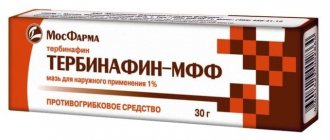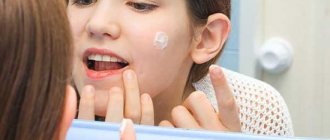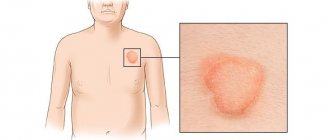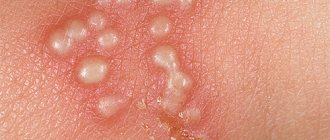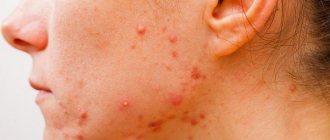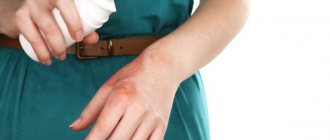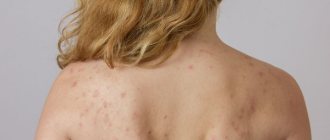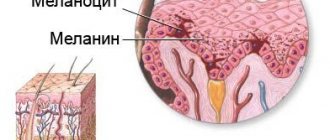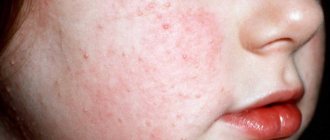Foot fungus, treatment of which often begins at an advanced stage, is not a harmless disease. Onychomycosis occurs due to the slightest failure to comply with standard hygiene standards. It can appear regardless of gender and age. How to cure foot fungus at home? The article provides effective recipes for treating this disease using folk methods.
Foot fungus is an infection caused by mitotic microorganisms. The disease often appears on the legs. Without proper treatment, it quickly spreads from the feet up the legs, causing a lot of discomfort.
The symptoms of the disease largely depend on the type of infection that caused the fungus. But most often, foot fungus manifests itself with the following symptoms:
- incessant itching between the toes and on the skin of the feet;
- obvious not very pleasant smell;
- changing the color of the nail plate from pink to yellow;
- change in the structure of nails, the formation of waves on their surface;
- drying and peeling of the skin of the feet;
- the appearance of bubbles with liquid on the skin of the legs;
- pain and discomfort when walking.
Don't think that fungal infections only happen when visiting the pool, beach, sauna, pedicure salon or shower. In addition to walking barefoot in public, infections occur due to:
- damage to skin and nails;
- low quality shoes;
- excessive sweating;
- reduced immunity;
- age-related changes;
- disruptions in the functioning of the endocrine system;
- diabetes mellitus
To avoid fungal infection, never use other people’s things, follow good hygiene rules and wear only high-quality shoes.
Pathogens of mycosis
The appearance of foot fungus is caused by yeast bacteria and fungi. Among the most common pathogens are the following:
- Trichophyton interdigital - due to this type of parasitic fungus, small cracks appear on the heels and peeling of the skin between the toes. Over time, advanced cases can lead to itchy blisters and swollen feet.
- Trichophyton Red is a fungus that causes rubrophytosis. First, the skin of the feet thickens, later scales appear on it, and the disease itself moves to the nail plates and affects them, leading to atrophy and rejection.
- Candida Albicans is a fungus that most often affects women. With thrush of the feet, skin sloughs and redness forms underneath. Erosion and cracks are painful.
A qualified dermatologist can determine what type of pathogen provoked the appearance of mycosis. You should pay attention to the condition of the skin of your legs and take the necessary measures in case of pathological changes.
What to do if you have a fungus?!
Read more >> |
Symptoms of the disease
The causative agents of mycosis can be:
- mold fungi;
- dermatophytes;
- yeast fungus.
Depending on what kind of fungus provoked the disease, the symptoms of the disease will differ:
- Mold fungus develops mainly in summer, in hot and humid weather, when the skin becomes dry.
- The disease is caused by yeast fungi, it will spread not only to the areas between the fingers, but also to the nail plates.
- The disease, caused by dermatophytes, begins to manifest itself on the little toe or areas near the big toe, and then spreads throughout the foot.
Symptoms of mycosis differ depending on the stage of the disease:
- At the initial stage of the disease, not every patient will suspect a fungal infection. During this period, the disease manifests itself with small cracks, a feeling of itching between the fingers, increased peeling and dryness in the affected areas.
- In the active phase, if untreated, areas of redness form between the fingers, peeling becomes more obvious with the appearance of fluid-filled blisters. There is an inflammatory process, tissue swelling and coarsening of the epidermis.
- The advanced stage is characterized by the appearance of pus, inflammation, redness and swelling. My feet itch unbearably. The skin becomes covered with deep cracks and constantly gets wet. Ulcers and sores look like one continuous wound. The nails begin to peel off from the bed.
Detecting mycosis at home is quite simple. To do this, you need to immerse your feet in a solution of potassium permanganate for a few seconds. Potassium permanganate will color healthy skin a pinkish tint, while areas with fungus between the toes will remain the same color. This reaction is associated with structural changes in the skin.
How does foot fungus manifest?
Symptoms indicating skin pathologies on the feet and toes:
- unpleasant odor from feet;
- flaky areas and thickening of the skin;
- cracks between the toes or on the heels;
- skin redness and peeling;
- itchy areas, burning;
- bubbles filled with liquid.
Any causative agent of mycosis causes damage from the interdigital folds, gradually moving to the entire foot. Painful sensations are noted. In some cases, folk remedies are as effective as pharmaceutical drugs.
The effectiveness of home therapy
Many dermatologists note the high effectiveness of treating fungal diseases with folk remedies , since they contain components that have a pronounced fungicidal and fungistatic effect.
Penetrating into the deep layers of the skin, the active components block the growth and stop the vital activity of pathogenic microorganisms, eliminating the symptomatic manifestations of the disease.
Important!
If used regularly, it will be possible to stop the development of pathology and get rid of its external manifestations in 2–3 weeks.
General methods of treating affected skin
Varieties of treatment procedures, each of which has its own amenities:
- Steam baths . The required component is added to hot water, after which you need to immerse your feet in the liquid for a certain time. This procedure will soften the keratinized layers of the epidermis, which are easily removed and do not interfere with the action of the next medicinal composition.
- Lubrication . A self-prepared medicinal mixture or solution is smeared and rubbed into the affected areas of the feet, after which you need to put on cotton socks and leave the product overnight to absorb.
- Wraps . This method is used after steaming. Gauze or bandage is soaked in a special solution and wrapped around the affected foot. It is better to leave the compress overnight.
You should start treating the fungus immediately after it appears, otherwise there is a risk of seriously developing the disease and infecting your household.
Simple remedies that are available in every home
In your home medicine cabinet you can find cheap but effective remedies for getting rid of mycosis.
Potassium permangantsovka
Dilute several crystals of potassium permanganate in 1 liter of water and soak gauze with the resulting solution. It is good to steam your feet in hot water with the addition of salt, soda or any essential oil. Wipe dry and wrap in damp gauze. Leave the compress overnight.
Soda
Make a paste of water and soda and apply it to the areas of the foot affected by mycosis. Leave for 10-20 minutes, rinse. Spray with baby powder.
You can make soda baths. To do this, dilute 1-2 tablespoons of soda in a container with hot water and steam your feet for half an hour. Wipe dry with a napkin and put on cotton socks. It is better to do this procedure at night.
Medical alcohol
Soak a cotton pad or ball in rubbing alcohol and treat the areas between the toes and toes. An antiseptic will stop the proliferation of microorganisms. This rubbing is convenient when you need to quickly carry out any treatment procedure against foot fungus, but there is no time or opportunity to use full-fledged and long-lasting recipes.
Sea salt
Add 1 tablespoon of sea or iodized salt to 1 liter of hot water, steam your feet for 20-30 minutes. Rinse the saline solution thoroughly with running water. Dry with a towel, remove dead cells and apply the necessary medicinal composition.
Iodine
Areas affected by mycosis can be treated with iodine solution. To do this, apply iodine between your toes and on your feet with a cotton swab. The procedure should be performed only on clean skin of the feet.
Boric acid
Soak your feet in hot water until the skin softens, remove rough areas with pumice, wash with soap and dry with a towel. Sprinkle the areas where the fungus is found with boric acid powder, put on clean socks made from natural materials and leave overnight. You can use this product for a week.
Tar soap
It is good to steam your feet in a salt or soda bath. Make a paste of grated soap and warm water, apply it to your feet and between your toes, wait a few minutes. Next, take a pedicure brush or an old toothbrush and, with a little force, walk over the affected and rough areas. Rinse off the soap suds with water and put on cotton socks.
Birch tar is a natural substance that has a strong fungicidal (destroys fungus) effect. It is the best among effective remedies against foot fungus.
Foods that can affect foot fungus
Fungal microorganisms are afraid of the action of some products that are available in every housewife's kitchen.
Vinegar
In an acidic environment, various types of fungi cannot reproduce and die, so vinegar is often used in the fight against mycosis.
Wine vinegar can be applied to clean feet and toes. Moisten a cotton ball or disk with it and treat the affected areas. There is no need to rinse or wipe dry - the vinegar will evaporate on its own.
For a more intense effect, mix a few tablespoons of apple cider vinegar, warm water and sea salt to make a paste. It can be stored in the refrigerator for about a week, adding it to hot steam baths.
Onion
Puree 1 onion in a blender, mix with vegetable oil or Vaseline. Apply this composition to clean skin of the feet, wrap a bandage or gauze on top. The compress can be kept for up to half an hour.
Garlic
Grind a few cloves of garlic using a press and mix with soft butter. Homemade ointment can be rubbed into the steamed skin of the feet and left for several hours. It's better to wear socks on top.
Egg
A popular ointment is prepared from this ingredient. You need to pour vinegar over the egg so that it disappears under the liquid. Leave in a dark and cool place until a film remains from the shell. Remove it and vigorously stir in softened butter. This ointment can be stored in the refrigerator and applied to the feet and between the toes before bed.
The strong acrid odor disappears almost immediately after applying the composition.
Natural ground coffee
Ground coffee can be used as a scrub to remove dead skin cells on your feet. A gentle and at the same time effective product will make your legs smooth and increase blood circulation. Coffee scrub should be used during steam baths with added salt.
Herbal formulations that help cure mycosis
Plant mixtures and herbs that have a fungicidal effect can cure mycosis. It may be necessary to carry out a course of procedures to consolidate the results.
Medicinal fee
Steam 1 filter bag each of plantain, burdock, yarrow and wormwood in a thermos. Wait until it cools down. The resulting infusion can be added to a basin for steaming the legs or lubricated with it on the skin using a gauze napkin.
Dry collection
For long-term effects, you can make a dry mixture that is placed in socks for a day. Mix crushed leaves or flowers of sage, chamomile, St. John's wort and mint. The concentrated collection will have a depressing effect on the fungus, and sweat secretions will be absorbed into the dry composition.
Burdock
A fresh large burdock leaf needs to be intensively beaten and rolled out with a rolling pin. When it gives juice, wrap it around your leg and use it as a compress for a long-term effect. To secure the sheet to your foot, you can put a clean sock on top or wrap it with gauze.
Calendula
Take 1 cup of dried flowers or 10 pharmaceutical filter bags, pour 1 cup of boiling water and let it brew. Rub this lotion into the skin of your feet every day in the morning before leaving the house. The course of treatment is 1 month.
Celandine
Steam 5 tablespoons of celandine with 1 liter of water in a thermos. As soon as the temperature becomes tolerable for the skin, use it as a foot bath. This procedure can be carried out every day before bed or alternated with salt and soda steaming.
Celandine
Celandine is effective and one of the most effective remedies for skin diseases. For foot fungus, fresh and dried plants are used, on the basis of which baths and compresses are made.
For the baths, you need to prepare an infusion of celandine: 40 g of dried herb per 200 ml of water. Pour celandine with water, bring to a boil, leave until cool. Add to bath water: 200 ml of infusion per 5 liters of water. The duration of the procedure is no more than 20 minutes and no more than once every two days. You can make a compress from the same infusion. To do this, simply moisten gauze in the broth and apply it to the areas of the foot affected by the fungal infection.
If there are pustules or inflammation, you will need a fresh celandine plant or its juice, which can be used to treat cracks and rashes. Use celandine juice every 3 days until complete healing.
Important!
Celandine juice is poisonous and can cause severe burns. Specialist consultation is required.
Rules for the prevention of mycosis
To avoid or minimize the risk of foot fungus infection, you should follow certain rules.
- Pay sufficient attention to foot hygiene. Washing your feet every day after going outside will be more effective if you use tar or antibacterial soap.
- Do not use shared hygiene items. Even in a family, everyone should have their own washcloth, towel, razor, and pumice stone.
- Do not overuse visiting public places where you have to undress or take off your shoes. This applies to beaches, baths, swimming pools, and beauty salons. Ensure that instruments are thoroughly cleaned before using them and spray your feet and hands with an antiseptic yourself after visiting such places.
- Do not wear tight or uncomfortable shoes. This provokes poor circulation and increases sweating, and these components are a favorable environment for the proliferation of microorganisms.
- Eliminate corns and calluses in a timely manner , as well as monitor the condition of cuts and other leg injuries.
- Increase immunity during the season of colds and vitamin deficiency. A weakened body is not able to fight the effects of fungi.
Stories from our readers
Read the full article >> |
Effective remedies for treating fungus are available in every home; just open the medicine cabinet or kitchen cabinet. The therapeutic effect of cheap folk remedies is often not inferior to expensive medicines. Everyone will be able to choose a convenient form of application and means for themselves.
Alternative medicine
Folk recipes for foot fungus, which are easy to apply at home, are passed down from generation to generation. However, even the most harmless and effective remedies that relieve one person of mycosis can cause allergies and complications in others . Therefore, using them on your own, without first consulting a doctor, is not recommended. This is especially true when it comes to young children, pregnant and nursing mothers, people with heart disease, blood vessels, diabetes or asthma.
In order for folk remedies to really help in the treatment of mycosis on the legs, the following rules must be followed:
- The patient should use a separate towel, washcloth, bath basin and pedicure accessories.
- Regularly disinfect all patient’s personal belongings.
- Strictly observe the dosage when preparing home remedies and the regularity of their use.
- Do not stop treatment until symptoms disappear for 2 weeks to consolidate the results and prevent relapses.
If there is no positive dynamics with home treatment for a month or the condition worsens, you should consult a doctor to prescribe medications.
